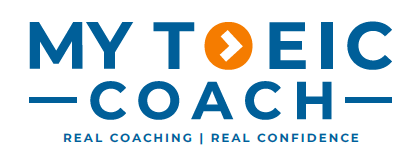✍️ The #1 Vocabulary Habit of Top TOEIC Scorers
Build Your Own English-English Dictionary
What’s the best way to boost your TOEIC vocabulary?
You might think it’s downloading another app, or memorising another 1,000-word list.
But when you ask actual high scorers what works, many give a simple — but powerful — answer:
“I build my own English-English dictionary.”
No automation. No AI.
Just a small, handwritten notebook that helps them learn words deeply, not just recognise them on a test.
And it works — again and again.
🧠 What Exactly Is an English-English Dictionary?
It’s a personal notebook where you:
Write down new words or phrases you encounter — from practice tests, articles, conversations, or songs.
Define the word using simple English — not Japanese translation.
Write your own example sentence — something that connects the word to your life, interests, or emotions.
Let’s say you come across the word “hesitate.”
Instead of:
hesitate = ためらう
You might write:
hesitate = to stop or pause before doing something because you're unsure
My example: “I hesitated before pressing ‘send’ on my TOEIC test registration.”
It doesn’t have to be perfect English. What matters is that you understand it.
🔄 Review Is the Secret Weapon
Just writing it down isn’t enough.
To lock new vocabulary into long-term memory, try this scientifically supported review cycle:
Review your notebook within 12 hours.
This tells your brain, “Hey, this is important.” It starts the memory process.Review it again within 24–48 hours.
This strengthens the connection and makes the word easier to recall later.Then space out your reviews: 3 days later, then 1 week later.
This is called spaced repetition, and it works.
You can simply reread your notes, quiz yourself, or cover the definitions and try to recall them.
🔗 Link New Words to What You Already Know
When you add a new word, ask:
“Is this similar to any word I already know?”
“Can I use this with other phrases I’ve learned?”
“What kind of TOEIC situation might use this?”
Example:
New word: negotiate
You might write:
negotiate = to talk about something to reach an agreement
Related word: agreement, contract, deal
My example: “The manager negotiated with the supplier for a better price.”
Now you’re not just learning one word — you’re building a network of connected ideas.
✍️ Why This Method Works So Well
Handwriting builds memory. Typing is passive. Writing forces your brain to slow down and absorb the meaning.
Personal examples create emotion. Emotion = stronger memory.
Simple English definitions build fluency. You stop translating. You start thinking in English.
This isn’t just about passing TOEIC.
It’s about building real-world English skills — for life, for work, and for confidence.
🚀 Ready to Start?
All you need is a notebook, a pen, and five quiet minutes a day.
Build your dictionary.
Review it often.
Make it personal.
And watch your vocabulary — and your score — grow from the inside out.
Want to Learn More?
Our blog is full of practical strategies that help test-takers like you build better habits, overcome common blocks, and improve TOEIC scores through smarter, easier methods. Try our free TOEIC Block quiz now!
